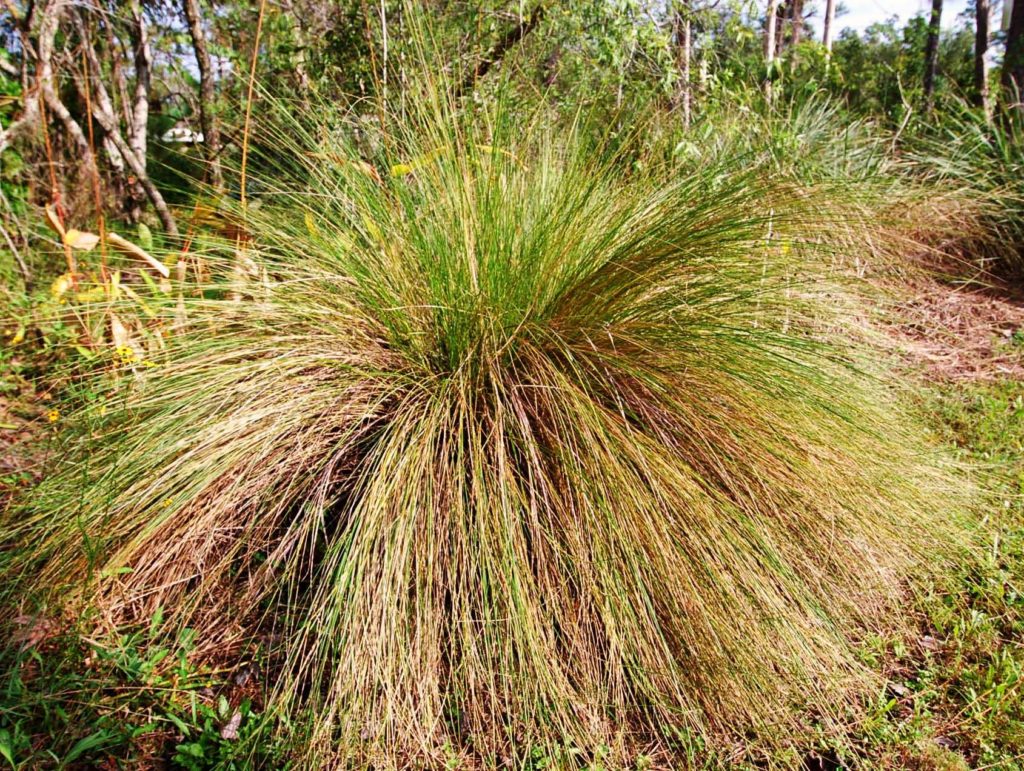
Sand Cordgrass
Spartina bakeri
Sand Cordgrass is a perennial, three foot tall clumping grass that is naturally found along the edges of brackish and freshwater marshes and lakes. It needs full sun and can tolerate dry soils as well as wet. It does not survive in permanently standing water, yet can tolerate one to two weeks of flooding.
The narrow leaves bend gracefully and make great specimens or can be grouped into a mass. It stays as a clump and won’t run off. Song birds eat the seeds and waterfowl hide among the leaves.
Try mixing this native grass with other wetland species along the upper edge of a lake. Golden Canna, Prairie Iris, Muhly Grass, Buttonbush, Virginia Willow, Red Maple, Bald and Pond Cypress, Leather Fern, Wax Myrtle, Fakahatchee Grass, Duck Potato and Salt Bush are good companions.
Scatter clumps in a pineland theme blended with Saw Palmetto and other shrubs and wildflowers. This is also a great soil binder that stops erosion. Plant in a V shaped mass with the open end upland where rain water pours into a lake to stop gullies from being formed in this high energy zone.
Cut the plants back to six inches in late winter to remove old leaves. Young growth will soon replace the stubble and gallinules, mottled ducks and other shore birds will use the cover to nest in.